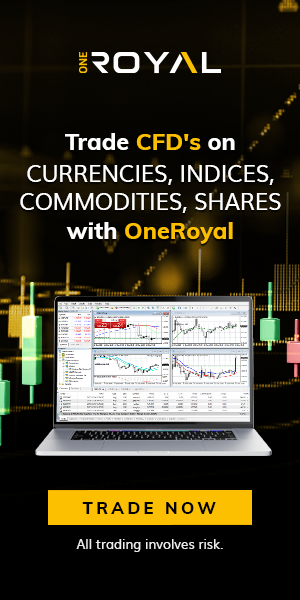Divergence in Forex trading is a common signal used by trader during technical analysis. It is a good indicator of potential trend reversal in market movement.
In this article, we will cover what divergences are and how to use divergence in forex trading.
In This Post
What is Divergence in Forex Trading?
Divergence in Forex refers to a situation where the price action of a currency pair diverges from a technical indicator. That is, the price of an asset moves in an opposite direction form an indicator such as the stochastic oscillator.
For example, the price maybe making new highs but the oscillator is making new lows. This discrepancy can signal a potential reversal of the current trend.
Common Indicators Used in Divergence
There are three indicators commonly used to spot out divergence in forex trading. They are:
RSI (Relative Strength Index): A momentum oscillator that measures the speed and change of price movements.
MACD (Moving Average Convergence Divergence): A trend-following indicator that compares two moving averages.
Stochastic Oscillator: Another momentum indicator that measures the closing price of a security relative to its high-low range over a specific period.
Another oscillator known as the Chaikin oscillator can also be used.
Types of Divergence
Positive Divergence
In this type, the price of the currency pair is making new lows, but the indicator is making new highs. This usually signals a potential bullish reversal, as the price may be oversold.
Negative Divergence
In the negative variation, the price of the currency pair is making new highs, but the indicator is making new lows. This suggests a potential bearish reversal, as the price may be overbought.
How to Identify Divergences While Trading
The main sign of a divergence is when the price forms a double top or double bottom pattern. Hence, there should be two visible highs or two visible lows on the chart. You can only spot it by looking at the high or low points on the price chart and the indicator. The highs should match up.
In order to spot out a divergence, traders must follow these steps:
Choose an indicator: Select a suitable indicator based on your trading style and preferences.
Observe price action: Monitor the price action of the currency pair and the corresponding indicator.
Identify divergence: Look for instances where the price action and the indicator are moving in opposite directions.
Confirm the signal: Consider other factors, such as volume and chart patterns, to confirm the signal.
How to Use Divergence in Forex Trading
There are different types of divergence signals that could be analyzed from charts. It is a basic signal, however, many people find it confusing in Forex trading. This is because there are different kinds of divergences.
They could either be regular or hidden, direct or reverse, and ultimately, they can be bullish or bearish. Therefore, they could be used to signal a trend reversal or trend continuation, depending on the type.
To trade for either a bullish or bearish reversal, it is important to first confirm the signal. Take your trade entry at the point where the trend line breaks out.
However, when the indicator is rising while the price is falling, it shows extended bearish divergence. This usually means a fake trend reversal will follow.
To decide when to enter a trade, use the MACD moving averages. When they cross below zero, it usually signals a trend reversal. But because of the hidden bearish divergence, it is possible the price will break above zero and then fall back down.
No matter how you trade, you should always use stop-loss and take-profit orders. You can’t watch the market 24/7.
These tools will protect your money and help you lock in profits. If you’re trading based on divergence signals, set a stop-loss above the highest high for a downtrend and below the lowest low for an uptrend
Frequently Asked Questions
What is divergence in forex trading?
Divergence happens when the price of a currency and an indicator (like RSI or MACD) move in opposite directions. It often signals a possible trend reversal, meaning the market might soon change direction.
What are the two types of divergence?
- Regular Divergence: This signals a possible trend reversal (from up to down or down to up).
- Hidden Divergence: This signals a trend continuation, meaning the market is likely to keep moving in the same direction.
How can I spot divergence on a chart?
Look at both the price and an indicator (like RSI or MACD). If the price is making higher highs but the indicator is making lower highs, that’s a sign of bearish divergence. If the price is making lower lows but the indicator is making higher lows, that’s a bullish divergence.
How do traders use divergence in forex?
Traders use divergence to predict when the market might change direction. If they see divergence forming, they might prepare to enter or exit a trade before a big price movement happens.
Is divergence always correct?
No, divergence is not always 100% accurate. Sometimes, the market may continue moving in the same direction despite showing divergence. That’s why traders often use it with other tools like trend lines, support and resistance, and candlestick patterns for better accuracy.
What is the best indicator to use with divergence?
The most common indicators for spotting divergence are:
- RSI (Relative Strength Index)
- MACD (Moving Average Convergence Divergence)
- Stochastic Oscillator
Conclusion
Leverage in forex trading can be a tool, but it must be used wisely. It allows traders to control big trades with small money, but it also increases risk.
If used carefully, leverage can help you maximize profits, but if misused, it can lead to huge losses. You need to manage risk, use the right lot sizes, and never trade more than you can afford to lose.
Now that you understand how leverage works, always trade with caution and make smart decisions.



